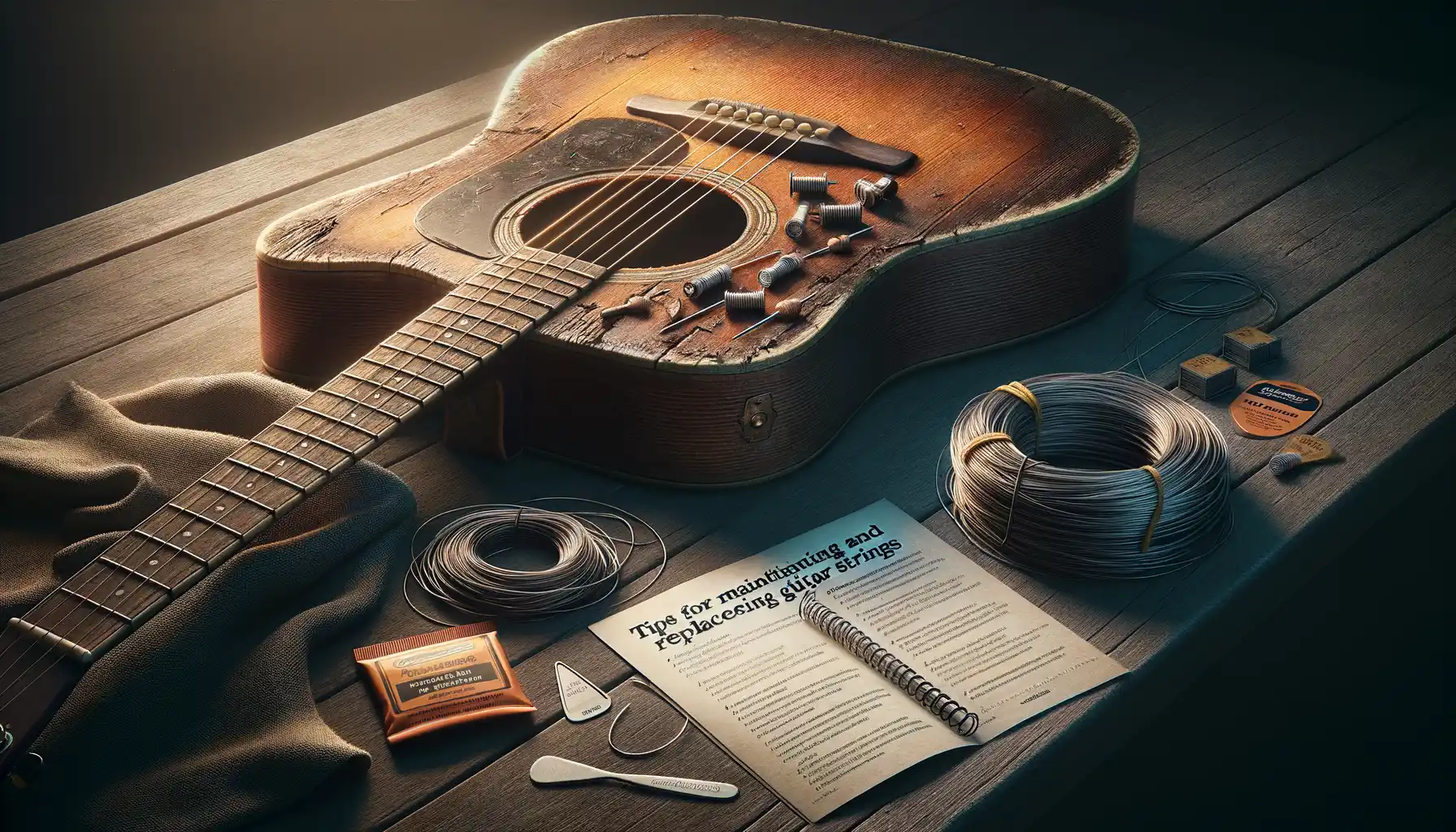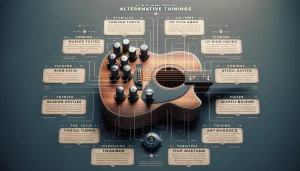Understanding the Types of Guitar Strings
Exploring Acoustic and Electric Guitar Strings
Choosing the right guitar strings is like selecting your perfect coffee blend – personal, unique, and full of flavor. With guitars, it all starts with understanding the two main categories: acoustic and electric.
Acoustic guitar strings often have a steel core and are wrapped in materials like bronze or phosphor bronze. These wraps aren’t just decorative; they shape the sound you’ll produce. Bronze strings create a bright, punchy tone, while phosphor bronze adds warmth – think of it as the difference between sunrise and candlelight.
Electric guitar strings, on the other hand, are built for precision and power. Their secret? Nickel-plated steel or stainless steel wrappings that amplify your every note through magnetic pickups. They’re perfect for everything from soulful blues to screaming rock solos.
- Nickel-plated steel: Balanced and versatile – ideal for most players.
- Stainless steel: Bright, corrosion-resistant, and made to last.
Both acoustic and electric strings cater to their own universe of sounds. Picking one is like choosing your own story’s soundtrack – bold electric riffs or soothing acoustic melodies?
Coated vs. Uncoated: The Lifespan Dilemma
Here’s the eternal debate among guitarists: coated or uncoated? Coated strings are like raincoats for your music; they shield against wear and tear, prolonging life and keeping your tone crisp. But some purists argue the coating dulls the raw, organic sound that uncoated strings bring.
If you’re someone who sweats like a rockstar even during practice sessions, coated strings can be a lifesaver. On the flip side, if you’re chasing that gritty, unfiltered tone, the clean feel of uncoated strings might resonate louder with your soul.
Factors to Consider When Choosing Guitar Strings

Your Playing Style: The Hidden Key
When it comes to guitar strings, your playing style is like the secret sauce that determines what you’ll need. If you’re a shredder, blazing through solos and riffs, you’ll likely crave lighter gauge strings for their agility. On the flip side, if you’re all about booming chords and soulful strumming, heavier gauges bring the depth and volume you need. And fingerstyle players? Think about balanced tension to easily pluck out those intricate patterns.
Ever wonder why some strings feel like butter under your fingers while others fight back? That’s because your touch—light, moderate, or heavy—plays a massive role. Choose strings that make your fingers sing, not scream!
The Sound You Can’t Live Without
What speaks to you: sparkling highs, warm mids, or a dark growl? String materials have their own unique “personality.” Consider this as you shop:
- Bronze: Bright and vibrant, perfect for acoustic melodies that shine.
- Nickel: Smooth and balanced for versatile electric tones.
- Coated varieties: Last longer, with a slightly mellow tone—a trade-off some love, others leave.
Finding the perfect string isn’t a one-size-fits-all deal. It’s about crafting something uniquely yours.
String Materials and Their Impact on Sound

What’s in a String? Material Choices That Shape Your Sound
Imagine your guitar as a storyteller. The strings? They’re its voice. And just like voices differ, so do the materials that make up your strings—each one offering a unique tone and personality. It’s not just metal; it’s magic.
Nickel-plated steel is the all-rounder of string materials. Think of it as that friend who can hang out at a rock concert one night and play acoustic jams by the fire the next. It gives you warmth with a little edge—perfect for versatility.
Now, let’s talk about stainless steel. These strings are bright, loud, and bold. Want your leads to cut through the mix like a diamond blade? Stainless steel is your go-to. Plus, they’re corrosion-resistant, which means they’re tough enough to handle sweaty gigs.
For something more mellow, try pure nickel. It’s like a well-aged wine or your favorite worn-out jeans—comforting and smooth. You’ll find this material evokes vintage vibes, perfect for blues and classic rock.
- Bronze: Best for acoustics, offering shimmering highs and rich, earthy lows.
- Phosphor bronze: Warmer than plain bronze, ideal for intricate fingerpicking.
So whether you’re chasing grit, shimmer, or something in between, your choice of string material is what paints your guitar’s voice on the canvas of silence.
String Gauges and Playability

Finding Your Perfect String Thickness
Choosing the right string gauge is like picking the perfect pair of shoes—it’s all about comfort, feel, and what fits your style. A string’s gauge—the thickness of that metallic strand—can completely transform how your guitar feels in your hands and sings to the room.
Do you love bending notes like a blues legend, sending soulful wails soaring from your fretboard? Then you might adore the silky ease of lighter gauges, such as .008 or .009 sets. These thinner strings are pliable and forgiving but can sacrifice a bit of volume and depth in exchange for their agility.
On the other hand, if power chords and chunky riffs are your playground, thicker strings like .011 or .012 give you meatier tone and sustain—but be prepared to wrestle with a little extra finger effort!
- Light Strings: Easy bending, brighter tones, less finger strain.
- Heavy Strings: Richer sound, robust bass, better for aggressive strumming or lowered tunings.
And here’s the kicker: What feels right to one guitarist might feel like wrestling barbed wire to another. The journey to finding “your gauge” is a personal adventure worth every note.
Tips for Maintaining and Replacing Guitar Strings

Keep Your Strings Singing for Longer
Your guitar’s strings are its voice, and like any great performer, they need care to shine on stage. Are your strings feeling dull or lifeless? It’s time to pamper them! First, after every jam session, grab a soft cloth and give your strings a loving wipe-down. This simple act removes oils, sweat, and grit—those silent string killers.
Another gem of advice? Invest in a good-quality string cleaner or lubricant. A quick swipe will keep rust away and maintain that sweet tone. And pro tip: Always wash your hands before playing. Those peanut butter sandwich crumbs don’t belong in your music!
When and How to Replace Guitar Strings
Ah, the bittersweet moment of string replacement. Don’t fret (pun intended)—it’s easier than you think! How do you know it’s time? Look out for these signs:
- The sound feels flat or muted, like your guitar’s asking for a new song.
- Strings look corroded or feel rough—hello, oxidation!
- They’re breaking too easily during your impromptu solos.
When restringing, patience is key. Loosen strings gently—no snapping required! Thread the fresh ones securely, tune them up, and stretch them lightly so they settle into pitch. Voilà, musical magic restored!






